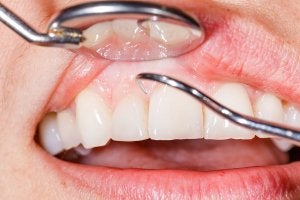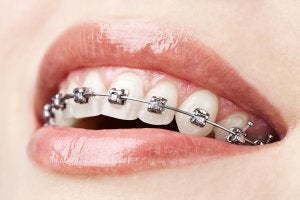-
What Are the Cosmetic Benefits of Dental Bonding?
 Dental bonding is a versatile procedure that a dentist near Glendale Heights can use to correct dental imperfections. One of the most common uses of dental bonding is tooth restoration. It can repair teeth damaged by decay and remedy smiles diminished by injuries. So if you have a cavity or chipped tooth, your dentist might use bonding to fix it. A cosmetic dentist might also recommend dental bonding for aesthetic reasons. If you have a tooth that does not match the rest of your smile in shape or color, your dentist can apply the bonding resin over it to achieve a uniform look. He can even use bonding to address minor misalignment issues that cause gapping between teeth. Dental bonding normally requires little tooth preparation and causes no pain, making it an easy way to correct the dental issues getting in the way between you and a beautiful smile.
Dental bonding is a versatile procedure that a dentist near Glendale Heights can use to correct dental imperfections. One of the most common uses of dental bonding is tooth restoration. It can repair teeth damaged by decay and remedy smiles diminished by injuries. So if you have a cavity or chipped tooth, your dentist might use bonding to fix it. A cosmetic dentist might also recommend dental bonding for aesthetic reasons. If you have a tooth that does not match the rest of your smile in shape or color, your dentist can apply the bonding resin over it to achieve a uniform look. He can even use bonding to address minor misalignment issues that cause gapping between teeth. Dental bonding normally requires little tooth preparation and causes no pain, making it an easy way to correct the dental issues getting in the way between you and a beautiful smile. Reference: www.webmd.com
-
What Are the Dangers of Gum Disease?
 Gum disease is a common oral health problem that can cause damage to teeth and gums. As widespread as this condition is, though, consistent oral hygiene can largely prevent you from suffering from it. Your brushing and flossing sessions, as well as regular dental cleanings by a dentist near Schaumburg, can help you enjoy healthy gums for a lifetime and avoid these gum disease complications:
Gum disease is a common oral health problem that can cause damage to teeth and gums. As widespread as this condition is, though, consistent oral hygiene can largely prevent you from suffering from it. Your brushing and flossing sessions, as well as regular dental cleanings by a dentist near Schaumburg, can help you enjoy healthy gums for a lifetime and avoid these gum disease complications: Receding Gums
Plaque buildup is normally the initial cause of gum disease . When bacteria have the chance to feed upon food particles and create acidic byproducts, these substances cling to tooth enamel and harden onto it. In response, the gums may become inflamed, and this inflammation eventually causes them to recede from the gumline. As gum tissue continues to pull back from tooth enamel, it leaves teeth vulnerable to additional plaque accumulation that can foster infection and tooth decay.
Tooth Loss
Without professional gum disease treatment from a dentist, receding gums can evolve into missing teeth. As gum tissue becomes weaker and less able to fortify teeth, you might notice your teeth beginning to shift in your mouth. In some cases, they may even fall out, or your dentist may need to extract them. Once tooth loss occurs, restoration of your smile would likely require dental implants or dentures.
Cardiovascular Disease
Heart disease is one of the most pressing health issues in the United States, and many healthcare providers see a connection between this problem and gum disease. When gum disease is severe, the bacteria causing it can eventually enter the affected gums and the blood vessels supplying nutrients to them. Once in the bloodstream, these bacteria can continue to trigger tissue inflammation. This side effect of gum disease could potentially increase your risk of a future heart attack, heart failure, or stroke. However, making sure that you regularly go to your dental office can safeguard you from these life-threatening issues. During your dental cleanings, your dentist can remove plaque that may be causing gum inflammation and recession to help you keep your smile free from gum disease.
Reference: www.prevention.com
-
What Happens After a Root Canal?
Root canal therapy alleviates not only tooth pain but also tissue infection. This video explains why seeing a dentist near Schaumburg for an infected tooth is so important.
When a tooth has an infection, it cannot expand to accommodate the growing bacteria inside it, which is why sufferers feel pain. The longer this infection persists, the more damage it can do to the tooth and bone surrounding it. A dentist performs a root canal to remove the infection and the potentially destructive pressure that it creates. As a result, after root canal therapy, patients often feel little to no pain when leaving the dental office. Their discomfort is gone, but equally important, their teeth are no longer vulnerable to the damaging effects of an infection.
-
A Patient’s Guide to Braces
 Getting braces in Schaumburg now can help you have a more cosmetically pleasing smile in the future. Plus, because of treatment advances, undergoing orthodontic work is easier than ever. When you keep in mind these guidelines, you can better ensure that your teeth and gums remain healthy and strong while you wear your braces.
Getting braces in Schaumburg now can help you have a more cosmetically pleasing smile in the future. Plus, because of treatment advances, undergoing orthodontic work is easier than ever. When you keep in mind these guidelines, you can better ensure that your teeth and gums remain healthy and strong while you wear your braces. Cleaning Your Teeth
Daily brushing and flossing are integral to avoiding tooth decay and gum disease. When you get braces, your dentist may advise that you make a few oral hygiene changes to protect your dental health. For one, you may need to replace your toothbrush more often. Contact between your braces and toothbrush can quickly wear out its bristles, making them less effective at scrubbing away bacteria and food particles. Two, you might have to allow yourself more time to clean your teeth and gums. Threading your floss through your wire can require a few extra minutes, as well as brushing thoroughly around each brace bracket.
Eating Meals
Wearing braces doesn’t mean that you have to overhaul your normal diet. Because food can easily catch on your brace brackets and wire, though, you may need to make a few minor alterations to your eating habits. For instance, when you eat fibrous foods, slice them into portions that you can eat with your back teeth instead of biting into them with your front teeth. You may also want to avoid sticky foods that can cling to your orthodontic equipment.
Seeing Your Dentist
Keeping up with your dental exams is crucial while you undergo orthodontic treatment. Even when you regularly brush and floss your teeth, bacteria and plaque can easily grow around your brace brackets. As a result, your teeth may be more vulnerable to tooth decay and gum disease while you undergo treatment. When you get dental cleanings, your dentist can thoroughly remove any accumulated plaque and tartar on your tooth enamel that may cause oral disease. He can also evaluate your orthodontic equipment to ensure that it is functioning as needed to move your teeth into better alignment as quickly as possible.
Reference: www.knowyourteeth.com
RECENT POSTS
categories
Archives
2025
2017
2016
2015
- October (1)
- September (2)
- August (4)
- July (4)
- June (5)
- May (4)
- April (4)
- March (5)
- February (5)
- January (5)
